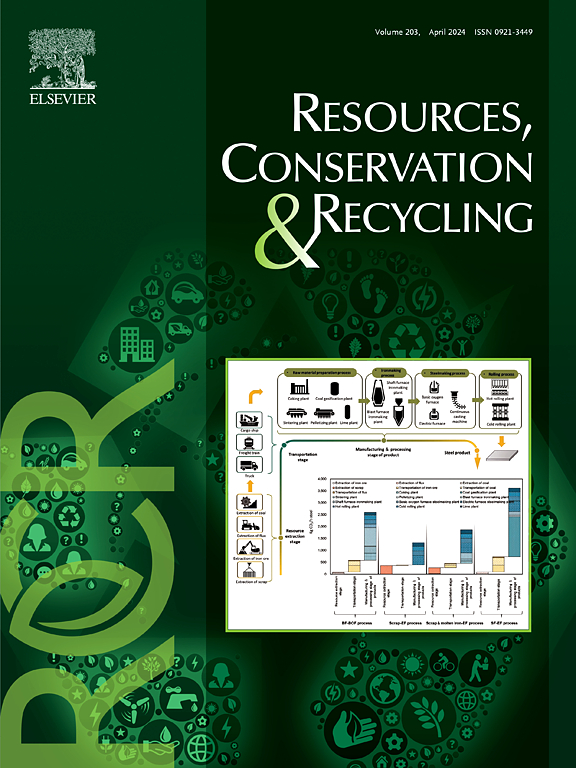A novel computer vision-based approach for autonomous building facade material stock estimation
IF 11.2
1区 环境科学与生态学
Q1 ENGINEERING, ENVIRONMENTAL
引用次数: 0
Abstract
Estimating building stock at the elemental level is essential for a circular economy. However, the lack of information on building stock due to considerable time and costs associated with data collection poses a significant challenge in large-scale analysis. This study employed computer vision-based façade classification and weighted material intensity to estimate building façade material stock using a bottom-up approach. Autonomous semantic enhancements on façade material typologies and opening areas aided better estimation of building-facing materials’ weight. ResNet 50 deep learning architecture was chosen, with an F1 score of 0.77 and 80 % accuracy. Most façade classes have achieved a relatively high level of accuracy of predictions. “Common Brick”, “Face Brick”, “Concrete Blocks”, and “Concrete” were identified as the most widespread façade materials in the model deployed area of interest: Southport (SA3), City of Gold Coast, Australia. The model provides the necessary foundations for progressing circular economy and urban metabolism efforts.

一种基于计算机视觉的建筑立面材料库存自动估算新方法
在基本层面估算建筑存量对循环经济至关重要。然而,由于与数据收集有关的大量时间和费用,缺乏关于建筑存量的信息,这对大规模分析构成了重大挑战。本研究采用基于计算机视觉的立面分类和加权材料强度,采用自下而上的方法估计建筑立面材料存量。在立面材料类型和开放区域上的自主语义增强有助于更好地估计建筑立面材料的重量。选择ResNet 50深度学习架构,F1得分为0.77,准确率为80%。大多数farade类已经达到了相对较高的预测准确度。“普通砖”、“面砖”、“混凝土块”和“混凝土”被认为是模型部署区域中最普遍的立面材料:澳大利亚黄金海岸城市南港(SA3)。该模型为推进循环经济和城市代谢工作提供了必要的基础。
本文章由计算机程序翻译,如有差异,请以英文原文为准。
求助全文
约1分钟内获得全文
求助全文
来源期刊

Resources Conservation and Recycling
环境科学-工程:环境
CiteScore
22.90
自引率
6.10%
发文量
625
审稿时长
23 days
期刊介绍:
The journal Resources, Conservation & Recycling welcomes contributions from research, which consider sustainable management and conservation of resources. The journal prioritizes understanding the transformation processes crucial for transitioning toward more sustainable production and consumption systems. It highlights technological, economic, institutional, and policy aspects related to specific resource management practices such as conservation, recycling, and resource substitution, as well as broader strategies like improving resource productivity and restructuring production and consumption patterns.
Contributions may address regional, national, or international scales and can range from individual resources or technologies to entire sectors or systems. Authors are encouraged to explore scientific and methodological issues alongside practical, environmental, and economic implications. However, manuscripts focusing solely on laboratory experiments without discussing their broader implications will not be considered for publication in the journal.
 求助内容:
求助内容: 应助结果提醒方式:
应助结果提醒方式:


